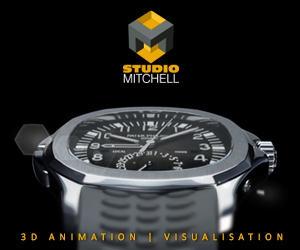Broadcast News
15/11/2017
Broadcasters & Post Production Facilities Digitising Legacy Tape Formats: Pt 2

The second in a series of articles by Pat Horridge of VET Training covering the issues facing broadcasters & post houses needing to digitise legacy tape formats.
Pat, a former broadcast service engineer then technical director of the Shoreditch based VET post house, now delivers broadcast and post house QC training and Avid workflows on site for clients. Along with post production overview courses and general understanding digital media training. Full details at the VET website www.vet.co.uk.
Some of the information provided is also common to restoration and archiving however the needs of broadcast TV are less demanding and the information in these articles is based on the assumption that the process is for TV ingest. For Archiving purposes the situation is often more complex and demands a more robust workflow, often for a greater volume of content.
Having worked specifically for organisations dealing with archiving legacy content the selection of playback equipment has more to do with achieving the best quality playback and protection of the tapes than a cost effective "ok for TV" approach.
This is covered in 5 articles:
• Legacy tape formats. What are they and how do we define them?
• How do we store audio/video content on magnetic tape?
• Aged tape considerations and solutions.
• What could possibly go wrong using that old VTR to play my legacy tape?
• The ingest process for best results.
How do we store Audio/Video content on magnetic tape?
In the last edition we looked at how tape based formats have evolved from reel to reel to cassette based and from analogue to digital. Now let's look at what's actually stored on those tapes.
Both digital and analogue video tape formats store information by magnetising the particles on the tape but in very different ways. With a digital format, the sound we hear and the light we see (both of which exist as analogue in the real world) are converted to numeric values and samples to allow them to be stored as digital data. This inherently, subtly, alters the signal but it's a price we pay for the convenience of digital data. Those digital values are made up of "bits", 8 bits making a byte and a byte presenting a digital value. We store those digital Bits as magnetic signals either North or South to represent digital 1 and 0 or on and off. So a digital magnetic particle is either magnetised in one polar direction or the other to represent its bit value and as long as we can measure that direction we can decipher the original digital bit value.
With analogue formats the analogue signals are stored on tape using a range of techniques based on carrier signals, a high frequency signal that allows the wanted signal to piggyback on it. Not dissimilar to how FM and AM radio signals get to your radio. (In the days before DAB). The recording is a representation of the original analogue signal added to a carrier of some sort. The magnetic particle on the tape being a representation of the strength of that signal on its carrier signal. Unlike digital magnetic particles it's not just the magnetic polarity that is important but the strength of the magnetism related to the other particles.
Inherent in analogue systems is noise. For audio that is hiss and for video it's the random changes in level in brightness and even colour, especially noticeable in darker areas of the picture. Every analogue recording introduces noise and an incorrectly setup VTR will add more during playback and may have done so in the original recording as well.
The implication of this is that legacy analogue recordings will already have a wide variation in signal quality recorded on them. This is compounded by the possibility of incorrectly calibrated VTRs used during the original recording.
Both digital and analogue systems use a combination of fixed playback heads (A fixed playback head is a static head that the tape passes as it travels from spool to spool) and scanning heads (A scanning head is typically fixed to a spinning drum in the machine and allows a very fast video head to tape speed as the drum spins fast and the tape passes slowly. This allows a helical scan to be achieved and is key to most video tape formats).
Static heads will wear over time as the tape slowly erodes the heads' facing surface. The scanning playback heads are far smaller and travel a lot faster so are more susceptible to wear and damage. Also both types of head rely on tape to head contact so any dirt, mould, damage causes loss of contact and therefore loss of signal. Also for accurate playback the various tracks (magnetic positions on the tape defined by the format as the location for video, audio, timecode etc) have to have been recorded physically in the correct position and the playback machine calibrated to match.
Each tape format has a specified track layout. That layout defines where on the tape the various information should reside. Typically this will be audio tracks, video tracks (sometime multiple if a component format), LTC (longitudinal timecode), control track (used to ensure correct alignment of the spinning heads to the tape. Even on digital formats these often reside in specific different parts of the tape to allow edit replacement of one or all as required. Most broadcast/commercial tape formats will have a number of static heads and spinning heads inside the VTR to achieve playback of the various tracks from the tape.
There are, of course, a few other practical considerations with cassette based formats. We need to move the tape from one spool to the other during playback (supply spool to take-up spool). That requires the VTR to move the tape and regulate that speed during playback. We need to detect the beginning and end of the tape so we don't tear it off the spool in rewind or fast forward and we need to ensure the tape has just the right resistance as it moves from spool to spool. This is the tension in the tape; too much and risk damaging the tape and the heads in the machine. Not enough tension and the tape may not make the correct contact with the playback heads or follow the tape path correctly and become damaged.
In the next addition we'll be looking at how tape ages and the issues that represents and some of the solutions.
Article by Pat Horridge at VET Training.
www.vet.co.uk
(JP/MH)
Pat, a former broadcast service engineer then technical director of the Shoreditch based VET post house, now delivers broadcast and post house QC training and Avid workflows on site for clients. Along with post production overview courses and general understanding digital media training. Full details at the VET website www.vet.co.uk.
Some of the information provided is also common to restoration and archiving however the needs of broadcast TV are less demanding and the information in these articles is based on the assumption that the process is for TV ingest. For Archiving purposes the situation is often more complex and demands a more robust workflow, often for a greater volume of content.
Having worked specifically for organisations dealing with archiving legacy content the selection of playback equipment has more to do with achieving the best quality playback and protection of the tapes than a cost effective "ok for TV" approach.
This is covered in 5 articles:
• Legacy tape formats. What are they and how do we define them?
• How do we store audio/video content on magnetic tape?
• Aged tape considerations and solutions.
• What could possibly go wrong using that old VTR to play my legacy tape?
• The ingest process for best results.
How do we store Audio/Video content on magnetic tape?
In the last edition we looked at how tape based formats have evolved from reel to reel to cassette based and from analogue to digital. Now let's look at what's actually stored on those tapes.
Both digital and analogue video tape formats store information by magnetising the particles on the tape but in very different ways. With a digital format, the sound we hear and the light we see (both of which exist as analogue in the real world) are converted to numeric values and samples to allow them to be stored as digital data. This inherently, subtly, alters the signal but it's a price we pay for the convenience of digital data. Those digital values are made up of "bits", 8 bits making a byte and a byte presenting a digital value. We store those digital Bits as magnetic signals either North or South to represent digital 1 and 0 or on and off. So a digital magnetic particle is either magnetised in one polar direction or the other to represent its bit value and as long as we can measure that direction we can decipher the original digital bit value.
With analogue formats the analogue signals are stored on tape using a range of techniques based on carrier signals, a high frequency signal that allows the wanted signal to piggyback on it. Not dissimilar to how FM and AM radio signals get to your radio. (In the days before DAB). The recording is a representation of the original analogue signal added to a carrier of some sort. The magnetic particle on the tape being a representation of the strength of that signal on its carrier signal. Unlike digital magnetic particles it's not just the magnetic polarity that is important but the strength of the magnetism related to the other particles.
Inherent in analogue systems is noise. For audio that is hiss and for video it's the random changes in level in brightness and even colour, especially noticeable in darker areas of the picture. Every analogue recording introduces noise and an incorrectly setup VTR will add more during playback and may have done so in the original recording as well.
The implication of this is that legacy analogue recordings will already have a wide variation in signal quality recorded on them. This is compounded by the possibility of incorrectly calibrated VTRs used during the original recording.
Both digital and analogue systems use a combination of fixed playback heads (A fixed playback head is a static head that the tape passes as it travels from spool to spool) and scanning heads (A scanning head is typically fixed to a spinning drum in the machine and allows a very fast video head to tape speed as the drum spins fast and the tape passes slowly. This allows a helical scan to be achieved and is key to most video tape formats).
Static heads will wear over time as the tape slowly erodes the heads' facing surface. The scanning playback heads are far smaller and travel a lot faster so are more susceptible to wear and damage. Also both types of head rely on tape to head contact so any dirt, mould, damage causes loss of contact and therefore loss of signal. Also for accurate playback the various tracks (magnetic positions on the tape defined by the format as the location for video, audio, timecode etc) have to have been recorded physically in the correct position and the playback machine calibrated to match.
Each tape format has a specified track layout. That layout defines where on the tape the various information should reside. Typically this will be audio tracks, video tracks (sometime multiple if a component format), LTC (longitudinal timecode), control track (used to ensure correct alignment of the spinning heads to the tape. Even on digital formats these often reside in specific different parts of the tape to allow edit replacement of one or all as required. Most broadcast/commercial tape formats will have a number of static heads and spinning heads inside the VTR to achieve playback of the various tracks from the tape.
There are, of course, a few other practical considerations with cassette based formats. We need to move the tape from one spool to the other during playback (supply spool to take-up spool). That requires the VTR to move the tape and regulate that speed during playback. We need to detect the beginning and end of the tape so we don't tear it off the spool in rewind or fast forward and we need to ensure the tape has just the right resistance as it moves from spool to spool. This is the tension in the tape; too much and risk damaging the tape and the heads in the machine. Not enough tension and the tape may not make the correct contact with the playback heads or follow the tape path correctly and become damaged.
In the next addition we'll be looking at how tape ages and the issues that represents and some of the solutions.
Article by Pat Horridge at VET Training.
www.vet.co.uk
(JP/MH)
Top Related Stories
Click here for the latest broadcast news stories.
07/09/2023
Bridge Technologies' VB440 Probe Can Now Generate Up To 64 Channels Of Audio Signal
Building upon the existing signal generation function which was added to Bridge Technologies' VB440 probe in 2022, the company has announced that the
Bridge Technologies' VB440 Probe Can Now Generate Up To 64 Channels Of Audio Signal
Building upon the existing signal generation function which was added to Bridge Technologies' VB440 probe in 2022, the company has announced that the
12/12/2017
Broadcasters & Post Production Facilities Digitising Legacy Tape Formats: Pt 4
The fourth in a series of articles by Pat Horridge of VET Training covering the issues facing broadcasters & post houses needing to digitise legacy ta
Broadcasters & Post Production Facilities Digitising Legacy Tape Formats: Pt 4
The fourth in a series of articles by Pat Horridge of VET Training covering the issues facing broadcasters & post houses needing to digitise legacy ta
08/02/2024
Palmer Digital Group Wins Additional Digital Menu Board Business
Palmer Digital Group has won additional digital menu board business with iconic ice cream shop Rainbow Cone, a Chicagoland institution since 1926. Fol
Palmer Digital Group Wins Additional Digital Menu Board Business
Palmer Digital Group has won additional digital menu board business with iconic ice cream shop Rainbow Cone, a Chicagoland institution since 1926. Fol
31/01/2024
Digital Alert Systems Announces Availability Of Update Of FEMA Digital Certificates
Digital Alert Systems has announced the availability of a necessary update of Federal Emergency Management Agency (FEMA) digital certificates used to
Digital Alert Systems Announces Availability Of Update Of FEMA Digital Certificates
Digital Alert Systems has announced the availability of a necessary update of Federal Emergency Management Agency (FEMA) digital certificates used to
17/08/2023
Palmer Digital Group Unveils New Line Of On-Wall Outdoor Digital Menu Boards
Palmer Digital Group has announced a new line of on-wall outdoor digital menu boards for the restaurant industry. The new series targets QSRs and fast
Palmer Digital Group Unveils New Line Of On-Wall Outdoor Digital Menu Boards
Palmer Digital Group has announced a new line of on-wall outdoor digital menu boards for the restaurant industry. The new series targets QSRs and fast
04/12/2017
Broadcasters & Post Production Facilities Digitising Legacy Tape Formats: Pt 3
Broadcasters & Post Production Facilities Digitising Legacy Tape Formats The third in a series of articles by Pat Horridge of VET Training covering th
Broadcasters & Post Production Facilities Digitising Legacy Tape Formats: Pt 3
Broadcasters & Post Production Facilities Digitising Legacy Tape Formats The third in a series of articles by Pat Horridge of VET Training covering th
23/05/2023
SFL Appoints Origiins Digital As Its Digital Partner
Origins Digital has been chosen by the Swiss Football League (SFL) as its digital partner for two projects aimed at advancing the SFL's online ecosyst
SFL Appoints Origiins Digital As Its Digital Partner
Origins Digital has been chosen by the Swiss Football League (SFL) as its digital partner for two projects aimed at advancing the SFL's online ecosyst
14/03/2023
Visix Adds Digital Designs To Its epaper Product Line
Visix has added digital desk signs to its epaper line of products to further support hybrid workplaces. The new EPS 42 epaper desk sign is small, ligh
Visix Adds Digital Designs To Its epaper Product Line
Visix has added digital desk signs to its epaper line of products to further support hybrid workplaces. The new EPS 42 epaper desk sign is small, ligh
15/04/2024
Amagi And AD Digital Launch MAVTV Brasil's FAST Channel
Amag and AD Digital, renowned for its nearly three decades of service and solution integration expertise in the Brazilian market, have unveiled the la
Amagi And AD Digital Launch MAVTV Brasil's FAST Channel
Amag and AD Digital, renowned for its nearly three decades of service and solution integration expertise in the Brazilian market, have unveiled the la
15/04/2024
Triveni Digital Awarded Patent Number US 11,924,260
Triveni Digital has been awarded Patent Number US 11,924,260 by the U.S. Patent and Trademark Office for pioneering "Secure Television Distribution ov
Triveni Digital Awarded Patent Number US 11,924,260
Triveni Digital has been awarded Patent Number US 11,924,260 by the U.S. Patent and Trademark Office for pioneering "Secure Television Distribution ov
20/09/2023
Slate Digital Unveils Infinity Bass
Slate Digital has unveiled Infinity Bass, the latest addition to its All Access Pass subscription service. Infinity Bass is a new bass enhancer plugin
Slate Digital Unveils Infinity Bass
Slate Digital has unveiled Infinity Bass, the latest addition to its All Access Pass subscription service. Infinity Bass is a new bass enhancer plugin
18/09/2023
Avid To Demonstrate Digital Nirvana's MetadataIQ Metadata Automation Tool
Digital Nirvana has announced that during IBC2023, Avid® will demonstrate Digital Nirvana's MetadataIQ metadata automation tool for news, sports, and
Avid To Demonstrate Digital Nirvana's MetadataIQ Metadata Automation Tool
Digital Nirvana has announced that during IBC2023, Avid® will demonstrate Digital Nirvana's MetadataIQ metadata automation tool for news, sports, and
19/07/2023
Colore Digital Invests In Leader Test Instruments
Colore Digital Imaging has selected Leader test instruments as their master reference tools. The company has invested in a Leader LV5350 ZEN Series 12
Colore Digital Invests In Leader Test Instruments
Colore Digital Imaging has selected Leader test instruments as their master reference tools. The company has invested in a Leader LV5350 ZEN Series 12
13/07/2023
Palmer Digital Group Offers Optional Speaker-Microphone Enclosures
Palmer Digital Group now offers optional speaker-microphone enclosures for its entire range of outdoor digital menu board systems, covering single, do
Palmer Digital Group Offers Optional Speaker-Microphone Enclosures
Palmer Digital Group now offers optional speaker-microphone enclosures for its entire range of outdoor digital menu board systems, covering single, do
04/07/2023
Blu Digital Group Opens New Facility In Barcelona
Blu Digital Group has announced its latest milestone in its European expansion – the inauguration of a facility in Barcelona, Spain. Nestled amidst th
Blu Digital Group Opens New Facility In Barcelona
Blu Digital Group has announced its latest milestone in its European expansion – the inauguration of a facility in Barcelona, Spain. Nestled amidst th















